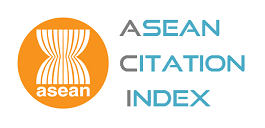การบริหารจัดการทางการเงินสำหรับผู้เริ่มประกอบธุรกิจ รายใหม่ในจังหวัดสกลนคร Financial Management for New Entrepreneurs in Sakon Nakhon Province
Keywords:
-Abstract
บทคัดย่อ
การวิจัยครั้งนี้มีวัตถุประสงค์เพื่อศึกษาแนวทางในการดำเนินธุรกิจในระยะเริ่มต้นสำหรับ ผู้ประกอบกิจการธุรกิจรายใหม่ ควรมีขนาดของโครงสร้างทางการเงินที่เหมาะสมอย่างไรจึงจะทำให้ธุรกิจสามารถดำเนินต่อไปได้ เพื่อเสริมสร้างศักยภาพให้แก่ผู้ประกอบการธุรกิจรายใหม่ ในการดำรงสภาพคล่องทางการเงินส่งผลให้ธุรกิจสามารถดำเนินงานได้อย่างต่อเนื่องและยั่งยืน เป็นแนวทางในการสร้างเครือข่ายทางธุรกิจ และสามารถนำมาปฏิบัติได้อย่างเป็นรูปธรรมระหว่างผู้ประกอบการรายใหม่ที่ต้องการหาแหล่งเงินทุน และสถาบันการเงินที่พร้อมจะเป็นแหล่งเงินทุนกลุ่มตัวอย่าง ได้แก่ 1. ผู้ประกอบการธุรกิจขนาดกลางและขนาดย่อม ในเขตอำเภอเมืองจังหวัดสกลนครจำนวน 308 ราย 2. กลุ่มสถาบันการเงินในเขตอำเภอเมืองจังหวัดสกลนคร จำนวน 5 ราย เครื่องมือที่ใช้ในการวิจัยคือ แบบสอบถาม เก็บรวบรวมข้อมูลโดยการสัมภาษณ์ สถิติที่ใช้ได้แก่ ค่าร้อยละ ค่าเฉลี่ย และค่าเบี่ยงเบนมาตรฐาน
ผลการวิจัย พบว่า ผู้ตอบแบบสอบถามเป็นเพศชายร้อยละ 51.3 และเพศหญิงร้อยละ 48.7 เมื่อจำแนกตามอายุ พบว่า มีอายุระหว่าง 31-40 ปี ร้อยละ 43.2 ระดับการศึกษาปริญญาตรีมากที่สุด ส่วนใหญ่ประกอบธุรกิจบริการ ประสบการณ์ในการดำเนินธุรกิจ 1-5 ปี โดยมีพื้นฐานการทำธุรกิจมาจากประสบการณ์ เงินลงทุนเริ่มแรกส่วนใหญ่แล้วต่ำกว่า 1,000,000 บาท แหล่งเงินทุนมาจากธนาคารพาณิชย์และสถาบันการเงิน อัตราดอกเบี้ยเงินกู้อยู่ในระดับ 5 % - 10 % ต่อปี ในด้านการดำเนินธุรกิจ ส่วนมากขอคำปรึกษาจากประชาชนทั่วไป รายได้เฉลี่ยต่อปี อยู่ในช่วง 50,001-1,000,000 บาท กลุ่มลูกค้าส่วนใหญ่เป็นประชาชนทั่วไป และสื่อในการประชาสัมพันธ์สินค้าใช้ใบปลิว และป้ายโฆษณา มากที่สุด
ผลการวิเคราะห์เกี่ยวกับปัจจัยที่มีผลกระทบต่อความสำเร็จหรือความล้มเหลวในการประกอบธุรกิจ ตามรายด้าน พบว่า ด้านการบริหารจัดการที่มีผลกระทบมากเป็นอันแรก ได้แก่ ความชัดเจนในการตั้งเป้าหมายของการดำเนินธุรกิจ ด้านผู้บริหารมีผลกระทบมาก ได้แก่ การมีวิสัยทัศน์ ด้านการตลาดและพัฒนาผลิตภัณฑ์มีผลกระทบมาก ได้แก่ ความพึงพอใจของลูกค้าในการให้บริการ ด้านการบริหารจัดการทางการเงิน มีผลกระทบมาก ได้แก่ความมั่นคงของรายได้ ด้านคู่แข่ง มีผลกระทบมาก ได้แก่ การคุกคามจากคู่แข่งภายในธุรกิจเดียวกัน ด้านเศรษฐกิจ สังคม วัฒนธรรม และการเมือง มีผลกระทบมาก ได้แก่ราคาน้ำมัน และปัญหาด้านการเงินพบว่า มีผลกระทบอยู่ในระดับปานกลาง ได้แก่ การขาดสภาพคล่องทางการเงิน ด้านปัจจัยที่มีผลต่อการตัดสินใจอนุมัติสินเชื่อของสถาบันการเงิน มีผลกระทบมากที่สุด ได้แก่ การปล่อยสินเชื่อที่พิจารณาจากนโยบายขององค์กรเป็นหลัก
Abstract
The purposes of this study were: 1) to find out the appropriate financial structure for running new entrepreneurs’ businesses so as to maintain the financial liquidity to make their businesses proceed consistently and sustainably, 2) to gain concrete guidelines on building business network which could be operated among new entrepreneurs who would seek for financial funds from the financial institutions which were ready to be their supportive financial sources. The subjects used to represent the population included (1) 308 Sakon Nakhon’s small and medium sized businesses’ entrepreneurs, (2) 5 Sakon Nakhon’s financial institutions. The statistics used to analyze the responses in the questionnaire and interviews instruments. This statistical tools used in this study are Percentages, Mean, Standard Deviation analysis.
This research results indicated that of all the respondents, 51.3 percent were males and 48.7 were females. The people who were in the age group of 31 - 40 years old contained 43.2 percent of all the respondents and most of them held the Bachelor’s degrees. Their businesses involved service sales. These people’s background knowledge in running businesses was obtained directly from operating their businesses and they had 1-5 years’ experiences. Initially, their investment funds were lower than 1,000,000 baht. Their investments were borrowed from commercial banks and financial institutions and they had to pay 5 -10 percent annual interests to most of their loans. In running their businesses, most of them got advice from people in general. Their income ranged from 50,001 – 1,000,000 baht per year. Most of their customers were general people. The medium these entrepreneurs used for public relations and advertising consisted of leaflets and billboards.
This research results about factors which would impact on the businesses’ success or failure included these aspects: the administration, and the clear targets of establishing the businesses. The respondents’ opinions shown that these factors impacted at the high level on the success in or failure at running the businesses.
Administrators – The respondents’ opinions indicated that the administrators’ vision would be the first factor which resulted at the high level in the businesses’ success or failure.
Marketing and Product Development – When surveying the respondents’ opinions, it was found that the customers’ satisfaction of the services was the first factor which resulted at the high level in the businesses’ success or failure.
Financial Management – The respondents perceived that the stability of an income was the first factor which resulted at the high level in the businesses’ success or failure.
Business Rivals – Threat from the same type of business rivals was the first factor which resulted at the high level in the businesses’ success or failure.
Economy, Society, Culture and Politics – Among these factors, oil price was seen as the first factor which resulted at the high level in the businesses’ success or failure.
Financial problem -The first financial problem which resulted in the businesses’ success or failure was the lack of financial liquidity. The respondents’ opinions on this aspect were at moderate level.
Factors Impacting on Granting the Loan – The banks’ policies were perceived as the first factor which had major impact on granting the loans to the banks’ clients. The respondents’ opinions on this aspect was at the highest level.







